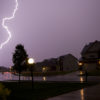Your pool and the surrounding area is one of the hardest-working “rooms” in your home. It’s your sanctuary when you’re feeling stressed, a place to relax with the family, your favorite place to throw a party and a backyard “gym” where you can exercise and keep looking your best. This pool landscaping do’s and don’ts can help you create the lush poolside landscape you’ve dreamed about.
People in the South have a tremendous advantage over those living in the snow belt or desert regions. It’s not too hard to have something blooming every month of the year. Temperatures seldom drop below freezing or reach the blistering heat of the desert. Southern humidity can be hard on people, but most flowers and trees love it.
Many in the Desert Southwest, utilize irrigation to have beautiful backyards as well and can grow flowering plants in the winter months.
Planting Tips
Your flowers, shrubs and small trees provide privacy, color, and texture. Most will do very well on your patio. You can choose a theme such as desert, beach, oasis or flowering garden and have fun finding the perfect flowers, herbs, shrubs, and trees.
• The chlorine in water splashed by swimmers won’t hurt your plantings.
• If you have a salt water system, the amount of salt in the water is only a fraction of the salt percentage in the ocean and shouldn’t cause a problem. However, if you prefer low-maintenance perennials and are concerned about long-term salt accumulation in the soil, consider a beach theme and salt-tolerant plants.
• Large containers or pots are your best friends. You can crowd flowers or herbs for gorgeous lushness as long as you give them enough fertilizer and water. Move pots or replant for maximum effect when in or out of bloom.
• Local nurseries are a great source of information on the best choices for your area.
• Pay attention to what the pros are planting. When you notice a bed of snapdragons, marigolds or petunias being planted outside an office building, it’s the best time to fill your own pots or beds.
• When planting, keep the maximum size of a shrub or small tree in mind. Tree root systems can extend far from the trunk and are attracted to a water source, so don’t risk the possibility of invasive roots damaging your pool.
• Don’t grow grass nearby – grass clippings are too messy when they get in the water.
• Even if no one in your family is allergic to pollen, it can cause algae to grow and attract bees and other insects you’d rather avoid.
• Light reflected from a cement patio creates heat which may mean more frequent watering.
• Most plants commonly grown in the South are used to frequent rain so aren’t bothered by splashing. If you want to grow a succulent or desert plant that prefers to be kept dry, just place it outside the splash zone.
• Potted veggies, such as patio tomatoes, peppers and eggplant are attractive, tasty and fun to grow in large pots or containers.
• Most herbs do well in pots. Grow them alone or with flowers for interesting combinations. Purple basil is decorative, great for cooking and pairs well with marigolds. Depending on the variety, rosemary can be used as a ground cover or a shrub.
Avoid Growing These Flowers, Shrubs, and Trees Near Your Pool
Some plants are messy, clogging your filter and vacuuming, some have dangerous thorns, some are invasive and may have potentially damaging root systems. Berries stain concrete while plant litter can upset your water chemistry. Most are wonderful additions to your landscape in any other location.
Acacia: There are hundreds of varieties, ranging in size from shrubs to large trees. Many have beautiful flowers and are easy to grow. However, acacias shed, some have thorns and they can be invasive, with more springing up everywhere.
Azalea: They’re gorgeous in the spring, but best planted elsewhere to avoid the mess of dead flowers and leaves getting into the water.
Bamboo: There are two types of bamboo, clumping and running. A landscape expert was once asked how to get rid of running bamboo which was spreading all over someone’s yard. He replied, only half-joking, “Dynamite.” If you must have bamboo (and it’s dramatic in the right location), be 100% sure it’s the clumping variety and restrict it to a large planter. Bamboo can also be messy. When in doubt, leave it out.
Bottlebrush: Seen everywhere, this small tree/large shrub has pretty red flowers and is easy to grow. However, it can grow too large and sheds.
Bougainvillea: Gorgeous, hardy and long-flowering, bougainvillea also get very large, shed and have thorns about 1″ long. Don’t plant where people walk.
Cactus: Easy to care for, but don’t put cactus or anything with thorns, spines or sharp-pointed leaves where someone could accidentally fall into it.
Crape Myrtle: A great Southern favorite, small crape myrtle flowers clog skimmers and, if they sink, are hard for a pressure-side cleaner to pick up.
Dwarf Arborvitae: These evergreens can be pruned into globes and other decorative shapes, but plant where fallen leaves/needles won’t clog the filter.
Honeysuckle: The fragrance is wonderful, but honeysuckles shed, attract bees and can be invasive.
Roses: Because of the thorns, roses are best kept elsewhere.
Enjoy your gorgeous sanctuary. Pool Troopers takes the hassle out of maintenance. You don’t need a contract and you can count on us to respect your time and your property. Check out our services and how you could get free use of our salt system. Contact Pool Troopers today.



